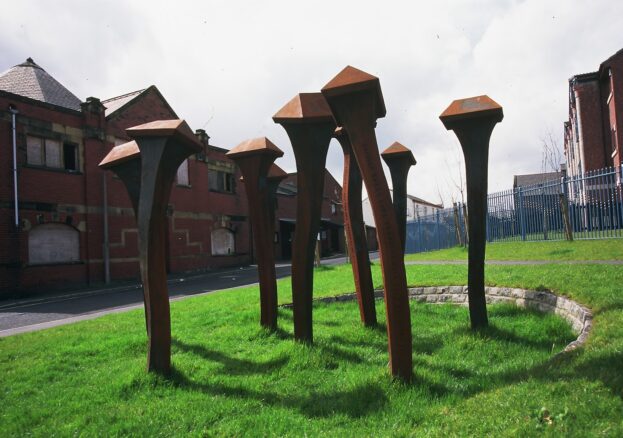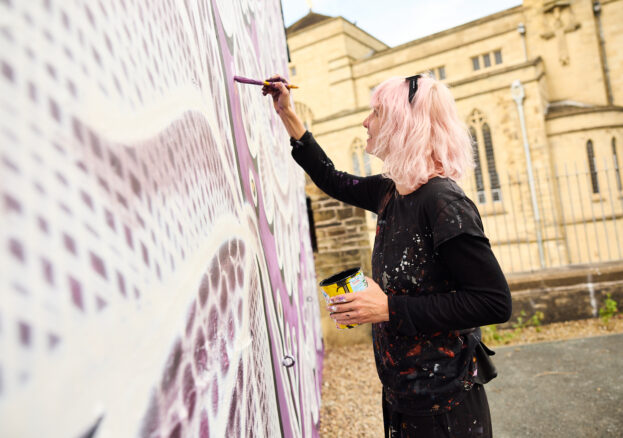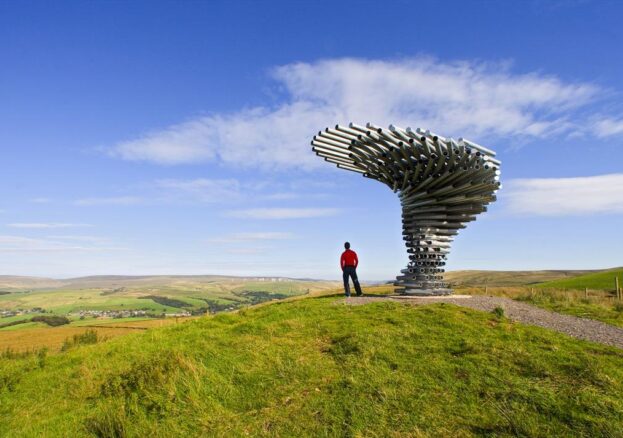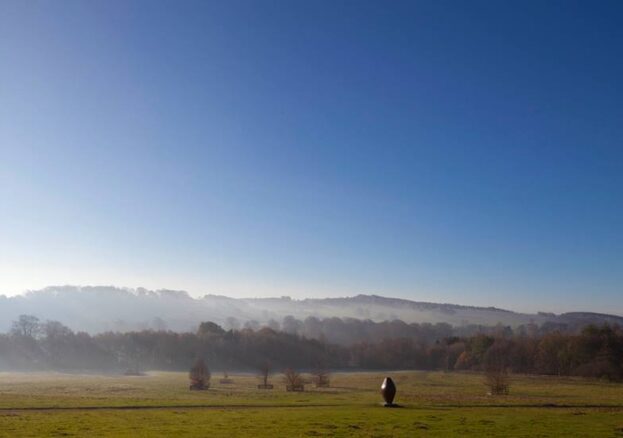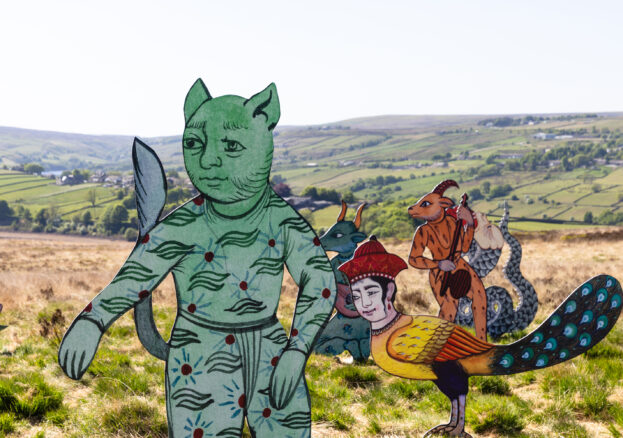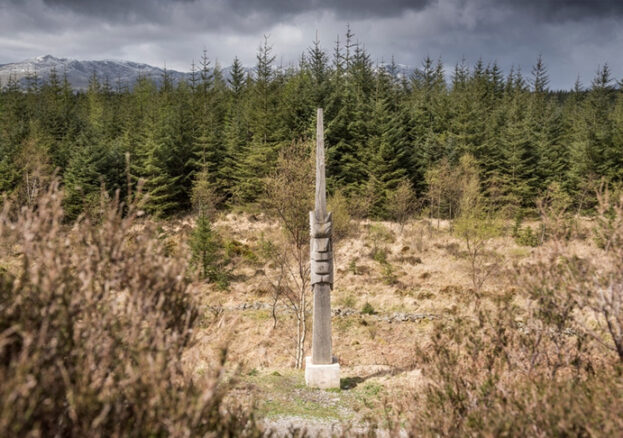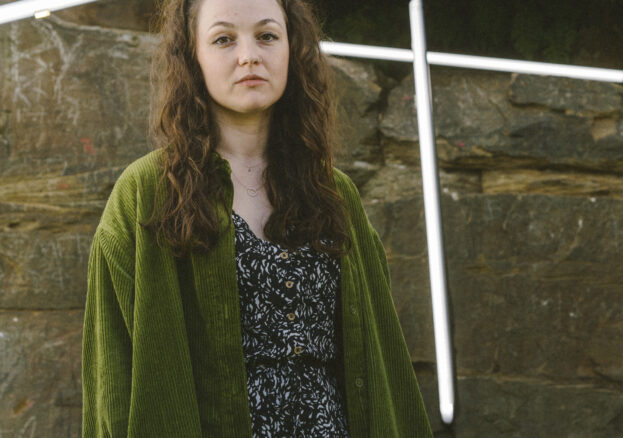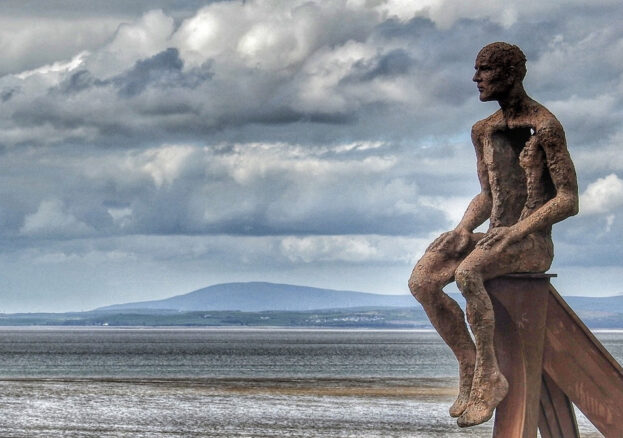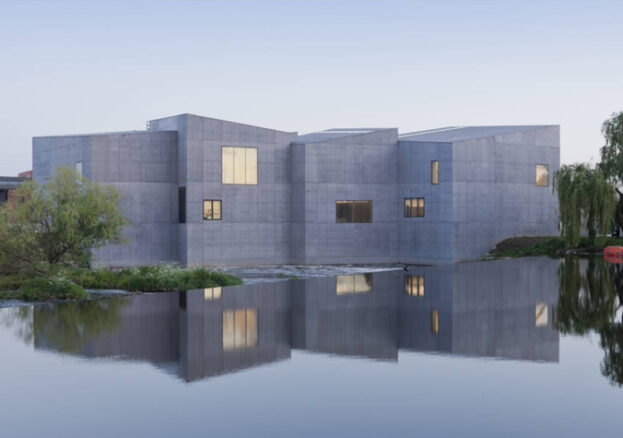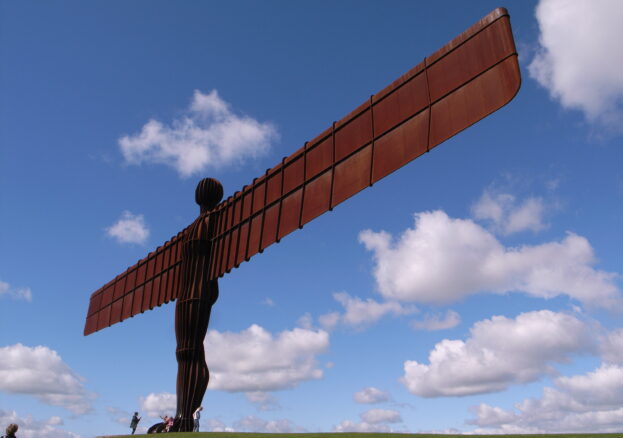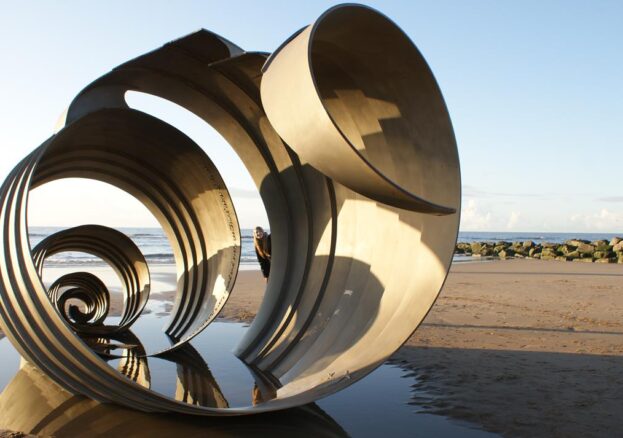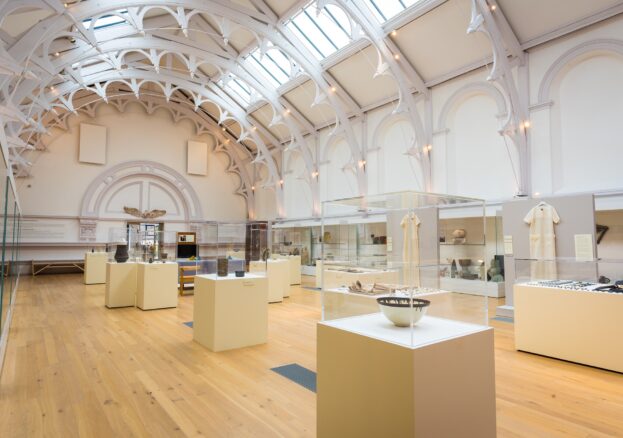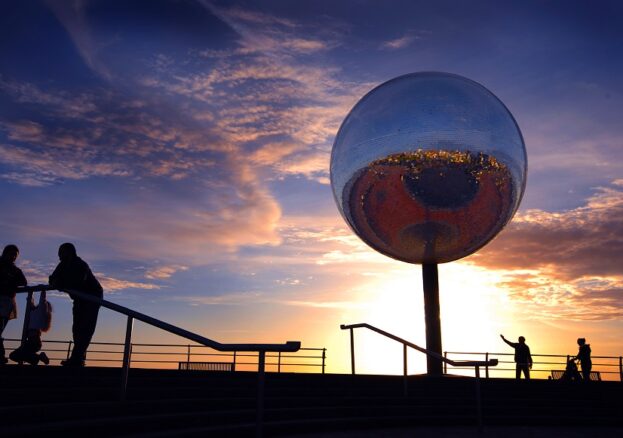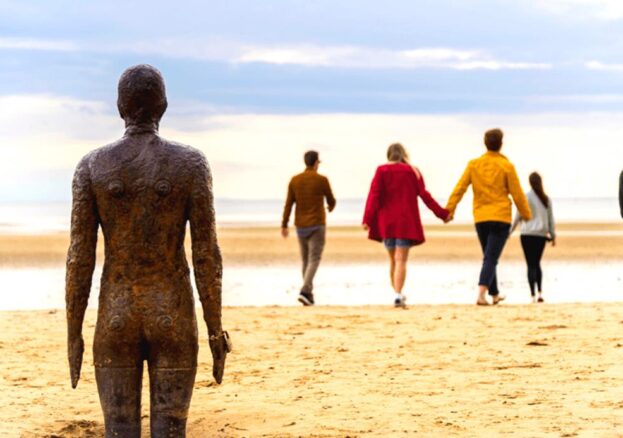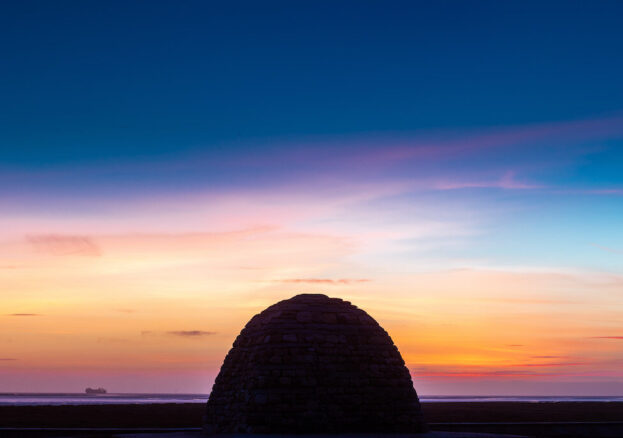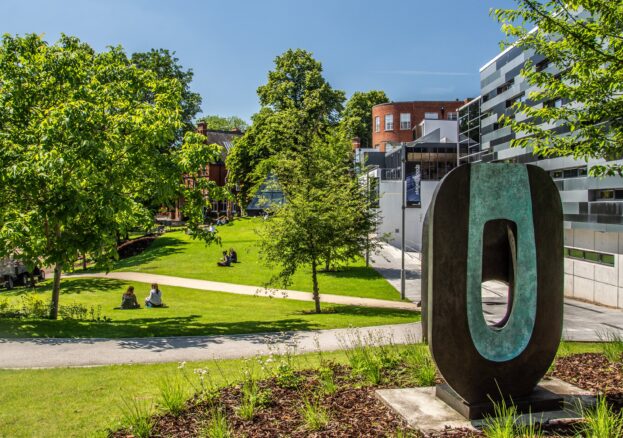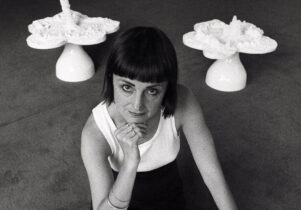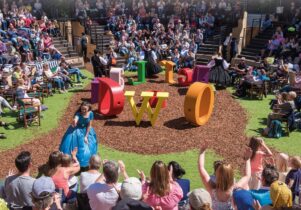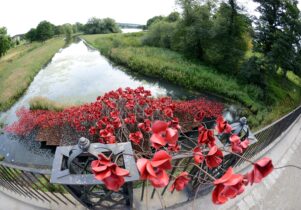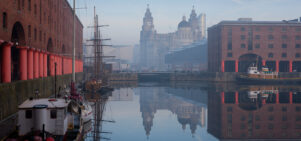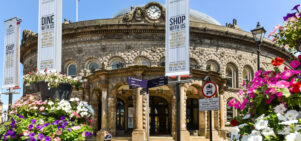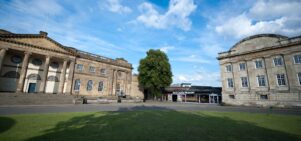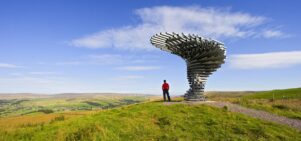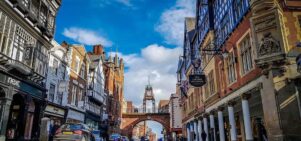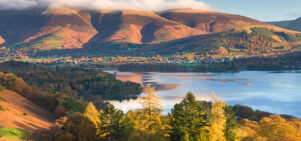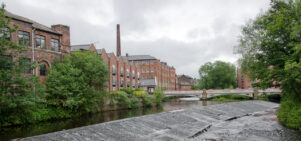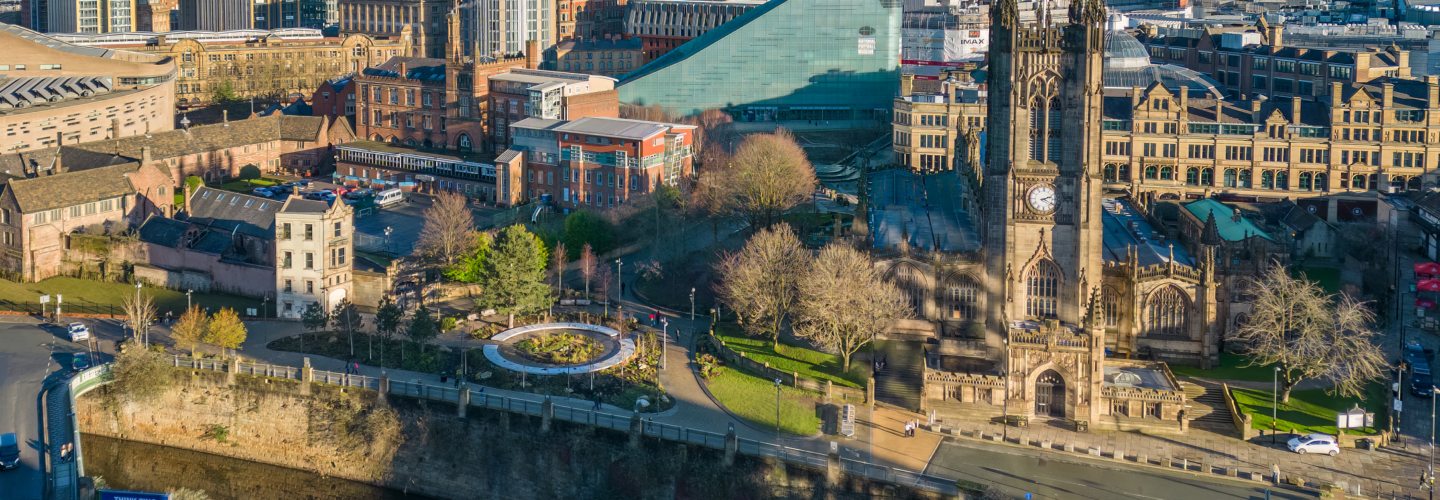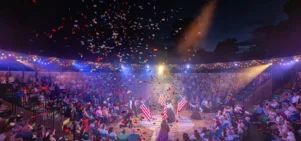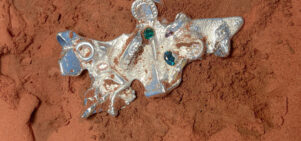Outdoor Art in the North
Polly Checkland HardingOften free and publicly accessible, outdoor art has a special relationship to community, cultural heritage and the landscape it’s situated in. Take Dream by Jaume Plensa at St Helens: created in collaboration with former miners from the town, the installation’s enormous plinth was modelled on a miner’s tally, while the 20m tall sculpture of a young girl’s dreaming visage above it represented the hopes of future generations. Antony Gormley’s initially contentious Angel of the North was hung with a giant football shirt as a badge of acceptance, while the radical Bankside Gallery Hull converted the enthusiastic reception of a new Banksy into a wider celebration of the existing street art and graffiti artists in the city.
This guide to the best Outdoor Art in the North is filled with similar stories – each enriching the installations’ own resonance and revealing something particular about the place they’re located. The Great Promenade in Blackpool captures the spirit of the seaside resort, while Morecambe’s Horizon Line Chamber venerates the beauty of the bay; Voyage in Hull commemorates the longstanding trading relationship between the port city and Iceland across the water. Each demonstrates that the lives we live are in relationship with the landscape, not separate from it – perhaps best illustrated by Another Place on Crosby Beach, in which 100 stationary figures are overtaken by the oncoming tide.
There’s a real range in how you might encounter the outdoor installations in this guide: some, like the works in the Artists Garden at York Art Gallery, are just outside a gallery’s buildings. Others can be either sought out or stumbled upon, like the Mythic Coast Artwork Trail, where a mysterious story begins to emerge the more installations you discover – or anywhere along the 33 miles of the Irwell Sculpture Trail, the longest route in the UK. Others still become landmarks in their own right, like Burnley’s Singing Ringing Tree, a musical gift at the top of a hill. The most recent inclusion, Laura Daly’s The Storm Cone, even hints at a digital future for outdoor art – but all illustrate how meaningful encounters with public art can be.
